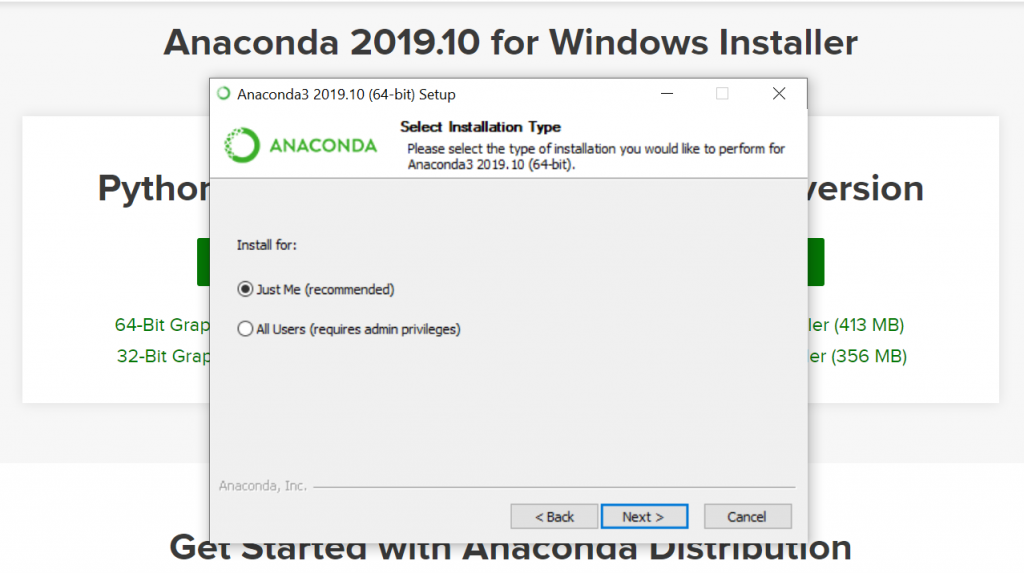

ANACONDA PYTHON MAC M1 INSTALL
The only working solution was to install these two through Anaconda. I had no problem configuring Numpy and TensorFlow, but Pandas and Scikit-Learn can’t run natively yet - at least I haven’t found working versions. Not all libraries are compatible yet on the new M1 chip. They aren’t “deep learning workstations” for sure, but they don’t cost that much, to begin with.Īll comparisons throughout the article are made between two Macbook Pros: If you’re reading this article, I’m assuming you’re considering if the new Macbooks are worth it for data science. It’s incredible - 14 hours of medium to heavy use without a problem.īut let’s focus on the benchmarks.

I’ve run multiple CPU exhaustive tasks, and the fans haven’t kicked in even once. It runs several times faster than my 2019 MBP while remaining completely silent. Continue reading for a more detailed description.ĭata science aside, this thing is revolutionary.


If I had to describe the new M1 chip in a single word, I would be this one - amazing. What follows is a comparison between the 2019 Intel-based MBP and the new one in programming and data science tasks. Naturally, I couldn’t resist and decided to buy one. | sec | np_veclib | np_default | np_openblas | np_netlib | np_openblas_source | M1 | i9–9880H | i5-6360U | dario.py: A benchmark script by Dario Radečić at the post above.ģ.It's said that, numpy installed in this way is optimized for Apple M1 and will be faster. Apple-TensorFlow: with python installed by miniforge, I directly install tensorflow, and numpy will also be installed.conda install numpy: numpy from original conda-forge channel, or pre-installed with anaconda.(Check from Activity Monitor, Kind of python process is Intel). Anaconda.: Then python is run via Rosseta.(Check from Activity Monitor, Kind of python process is Apple). Miniforge-arm64, so that python is natively run on M1 Max Chip.On M1 Max, why run in P圜harm IDE is constantly slower ~20% than run from terminal, which doesn't happen on my old Intel Mac.Įvidence supporting my questions is as follows:.On M1 Max and native run, why there isn't significant speed difference between conda installed Numpy and TensorFlow installed Numpy - which is supposed to be faster?.On M1 Max, why there isn't significant speed difference between native run (by miniforge) and run via Rosetta (by anaconda) - which is supposed to be slower ~20%?.
ANACONDA PYTHON MAC M1 PRO
Why python run natively on M1 Max is greatly (~100%) slower than on my old MacBook Pro 2016 with Intel i5?.I've tried several combinational settings to test speed - now I'm quite confused. I just got my new MacBook Pro with M1 Max chip and am setting up Python.


 0 kommentar(er)
0 kommentar(er)
